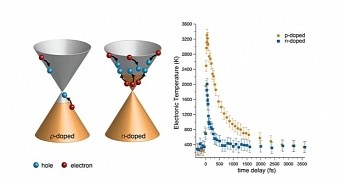Photovoltaic devices are items which transform light into electricity, thus making use of that inexhaustible source of clean and free energy known as the sun. The only problem is that efficiency quite frankly doesn't measure up to the world's needs.
Most solar panels can only harvest 11-15% of the light landing on them, less the hotter they grow. Yes, as ironic as it sounds, they lose efficiency the more light is available.
Some strides have been made in recent months, like a method that can increase that efficiency to 45%, most methods boiling down to better heat protection, or ways to otherwise offset the problem.
However, the world is always on the lookout for one of those gigantic breakthroughs that promise a revolution, and we might have one on our hands here.
Graphene can turn light into electricity
When we read the title and summary of a particular study published on Nano Letters, our reaction could accurately be described as “of course it's all about graphene again.” The more we learn about it, the more it seems that graphene can do anything.
In this instance, scientists have shown that graphene can turn one photon into multiple electrons, by using a spectroscopic method that observed the material's composition at a femto-second scale.
While graphene previously showed the ability to conduct electricity when exposed to light (and act as a better conductor than copper at room temperature by the way), conventional ways to detect electron movement have been unable to detect the conversion of photons to electrons until now.
This is because a femto-second lasts a quadrillionth of a second, and graphene “transforms” a photon into multiple electrons in 10-15 of those.
Jens Christian Johannsen from Marco Grioni's lab at EPFL has worked together with colleagues at Aarhus University and ELETTRA in Italy to detect the movement by means of trAPES at the Rutherford Appleton Laboratory in Oxford. The term is an acronym for ultrafast time- and angle-resolved photoemission spectroscopy.
They placed a small graphene sample in an ultra-high vacuum chamber and hit it with an ultrafast “pump” pulse of laser light, which excited the electrons, brought them to higher energy states (enabling them to drive a current) and hit the graphene with a time-delayed “probe” pulse that photographed, so to speak, the energy each electron had.
This sequence was repeated rapidly over time, building the equivalent of a stop-motion movie of the electron dynamics.
The graphene used was chemically “doped” with electrons and showed that a single photon can excite several electrons proportionally to the degree of doping (how many electrons were chemically added prior to the pulses). While the individual electrons return to the ground energy state quickly, they excite two more electrons on average, in a knock-on effect.
The bottom line
Graphene could enable photovoltaic devices with significant solar energy absorption efficiency, much to the surprise of no one. In fact, graphene could absorb light from the whole solar spectrum. It makes us sad that the scientists are moving on to other two-dimensional materials, but maybe some solar panel company or other will pick up graphene research where they left off.

 14 DAY TRIAL //
14 DAY TRIAL //